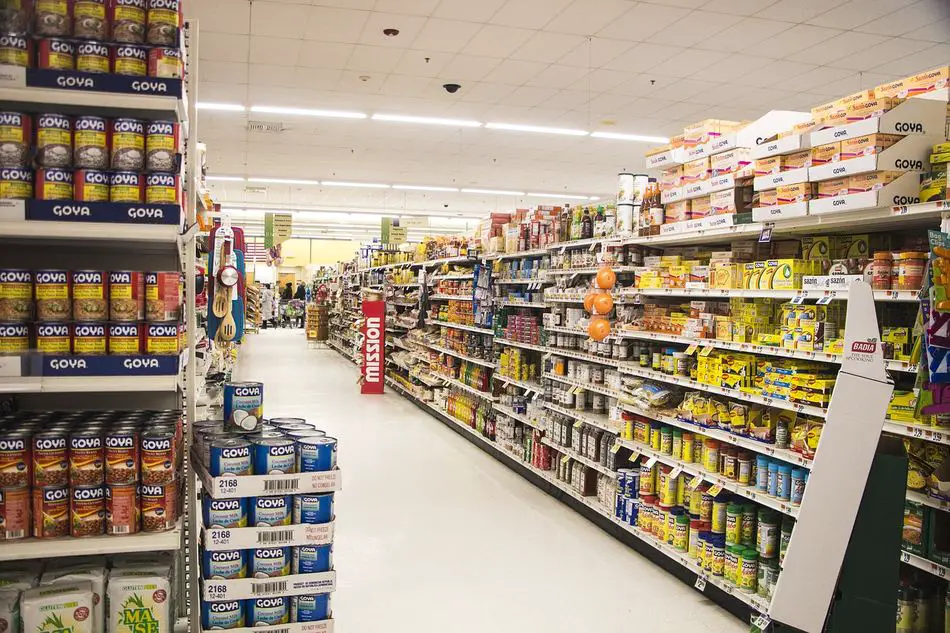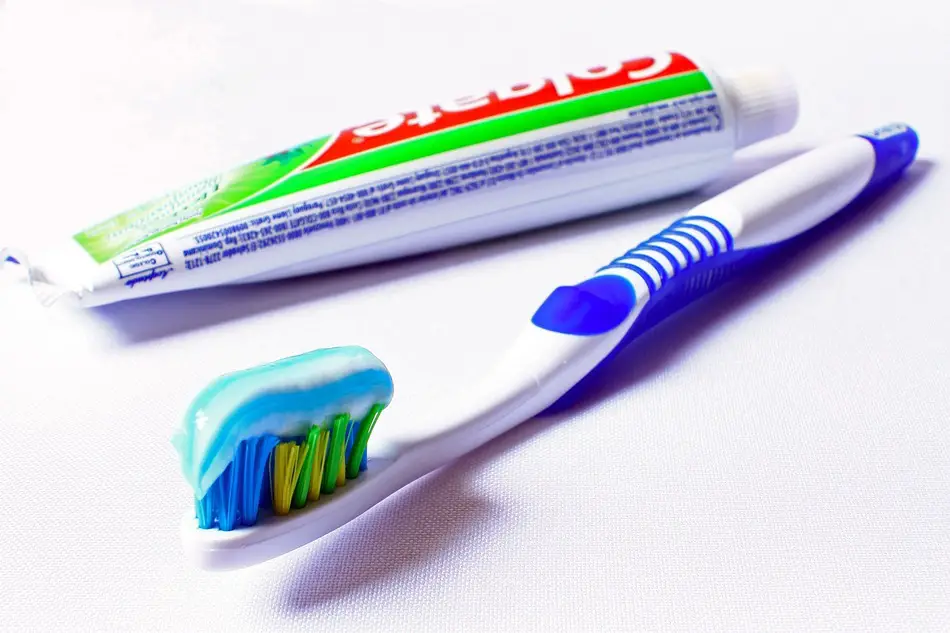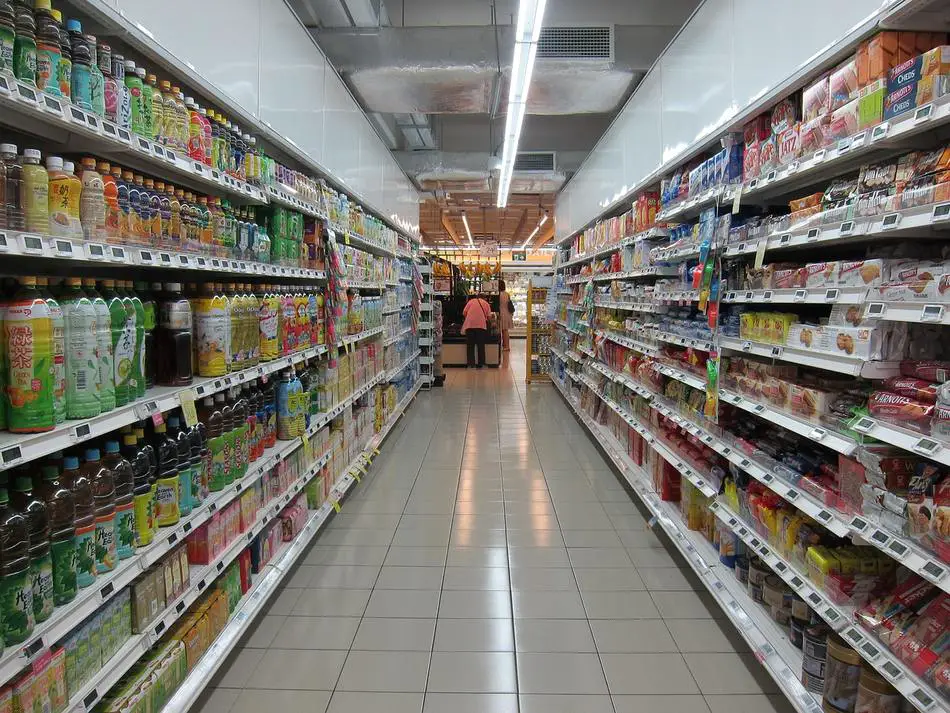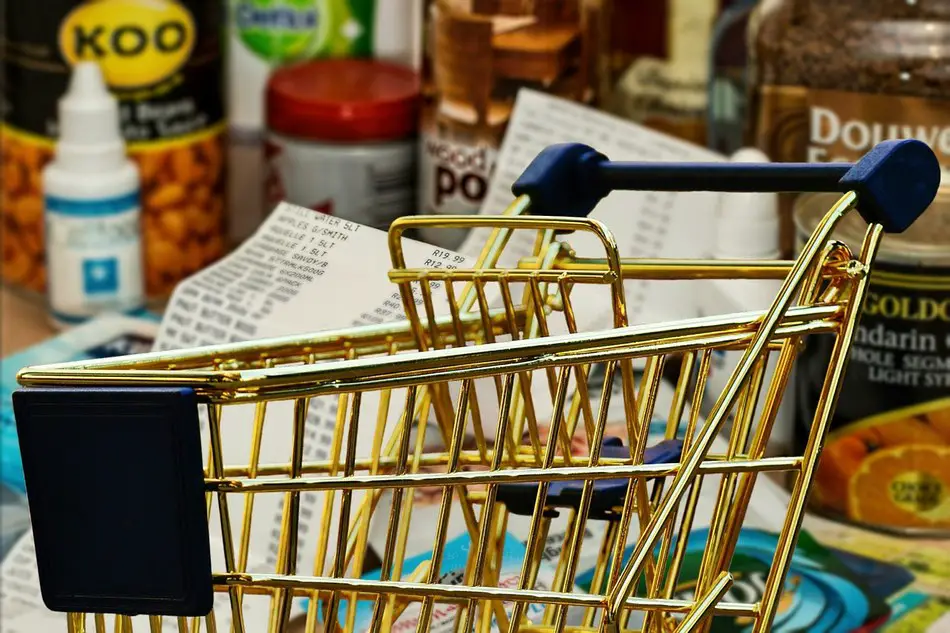Low cost prepping is actually a doable task. We all should be prepared for the worst outcomes of today’s reality, but we don’t have to spend thousands of hard-earned dollars on survival equipment. It’s completely possible to just walk into Walmart, or Walmart’s counterpart in your country, and fill your survival list on a very small budget.
I’ve done my own research on this topic, and came up with a list of items that can make a big difference in disastrous events – yet each and every one of them does not cost more than five dollars. The items can be sorted into five important categories. I even took this research a few steps further and outlined ten of the cheapest and most useful of such items. And finally, I also discuss what necessary survival steps and techniques you can take without spending another penny.
Let’s start with the five big categories, shall we?
A part of this article is summarized in the following video:
The Categories of Low Cost Prepping
All items on the low cost prepping list can be divided into 5 categories: first aid, water, food, hygiene items and emergency supplies. You might ask, do I need all of them? Well, a person can survive for 3 days without water, and as much as 3 weeks without food, but it would be a painful and probably lethal experience. And what if you are injured or running a fever? What if you are stuck on your roof for many days as your neighborhood is flooded?
As you can understand now, being fully prepared is a necessity. You will need the items that I am about to list, and trust me, I do not intend to suggest redundant or luxury items. These are the items and survival gadgets that can be utilized when an actual disaster strikes, and all of them are on a budget. Just make sure you stock enough to last you at least a week. Also, before deciding on quantities, see how many members there are going to be in your group, and who they actually are. A child might need less food than a grown man.
First aid
Since we are discussing low cost prepping, the items in this sub-list are basic pills that you can find in any drugstore and pharmacy. They effectively treat inflammation and pain. I will also mention a few items that are needed to treat wounds. All of these first aid items are cheap and widely available, and can be real lifesavers in times of need. These are very crucial items that should be in every survival backpack.
- First aid kits from American Red Cross. They are sealed and each can serve a person.
- First aid kit from Curad – it includes sterile dressings and patches
- Band-Aid’s All Purpose Cloth Tape
- Paracetamol (at least one pack)
- Tylenol (at least one pack)
- Benadryl capsules (at least one pack)
- Advil/ibuprofen (at least one pack)
- Emergency Mylar thermal blankets
- Betadine solution (it’s an anti-bacterial solution, get at least one bottle)
- Neosporin spray (it’s a pain-relieving and antiseptic spray)
The total cost of first aid items is no more than $60.
Amazon has a highly rated First Aid Kit that costs much less than that: First Aid Only 298 Piece All-Purpose First Aid Emergency Kit. It’s lightweight and compact, yet it includes an amazing amount of 298 items: bandages, antibiotic ointments, ibuprofen, aspirin, gauze pads, antiseptic towelettes, wound closures, tweezers, gloves, an eye pad, a thermometer, burn gel packets, and much more. A must-have for every low cost prepping list!
Water
As I mentioned earlier, you cannot survive for a long time without water. Fortunately, bottled water is cheap and non-perishable. You can stockpile as much as you need. You will need approximately 2 gallons for a person per day, which includes both drinking and sanitary needs. I would recommend buying even more than that, because you never know what might happen.
There is always the option of water purification, and I have written a thorough article about the best ways to purify water. Keep in mind, however, that some of the methods require additional investment, of time and/or money, while bottled water is always on a budget.
You can also stock on other low cost consumable liquids. Powdered milk costs less than $5, and one package is enough to prepare two gallons of milk. You can mix it with coffee and boiled water. Instant coffee and cappuccino mixes also cost under $5. This might not be your dreamy latte, but it’s something that can get you through a challenging day.
The total cost of products in the water category is no more than $30.
The most affordable and most reliable water filtering item is definitely LifeStraw (on Amazon). This award-winning tool has been globally recognized as a highly efficient water filter that allows you to drink any water directly. It’s ultralight, can be easly carried anywhere and nullifies the need for iodine tablets, as it removes 99.9999% of bacteria, parasites and pollutants. A trusty companion for every prepper and survivalist!

Food
Just like in case of water, you cannot survive without food. You need energy, nourishment, nutrients. For low cost prepping and for successful survival, we need to stockpile on food that costs less than $5 each and can last for years. It is also preferable to collect food that can be mixed with other food in order to create new dishes and break the monotony of identical dinners.
So first of all, there are cans. Canned goods can be your savior. You will need minerals and vitamins, but fresh vegetables and fruits expire quickly. The canned ones, however, can be consumed even if they are opened 2 years after they were packed. And these are the cans that I suggest to purchase:
- Assorted beans. These can be chick peas, kidney beans, and several others. They fill you quickly and have tons of necessary protein.
- Carrots (sliced)
- Peas and carrots (a popular combination, and again a lot of protein)
- Oranges or mandarins
- Tomato sauce
- Sliced potato
- Lasagna
- Mac and cheese
- Cheese ravioli in tomato sauce
- Italian pasta beef ravioli
Cans should also be stockpiled if you wish to stay safe during martial law.
In addition, there are foods that are not necessarily canned, but they can last for a very long time.
- Pasta. This is an underrated food. Sure, it might seem boring, but it’s very cheap, very filling and can be prepared in minutes. You can always mix it with sauce or other goods. All in all, it’s a great source of carbs and energy.
- Instant pudding (get several packs)
- Flour – really inexpensive, you can make bread from it.
- Sugar and salt – just keep them in dry places, don’t let them get wet!
- Sardines
- Ham
- Chicken breast
- Quaker
- Raisins. Some don’t like them, but they are very nutritious.
- Meatballs for pasta/spaghetti
- Chicken pot pie soup
- 5 pound bags of rice. Rice (particularly white one) can be stored away for a long period of time without going bad. It is very filling, very cheap and has tons of carbs to energize you when you most need it.
- Peanut butter – a great calories source. Your body needs certain fats, and peanut butter has them. It’s delicious, and it provides you with additional energy that is needed for your survival.
The total cost of food mentioned here is no more than $175.
A different and even more money-saving approach to survival food is getting Wise Company Emergency Food Supply (Amazon’s Choice product). For a very low price you get 60 servings of different types of meals that can add a welcome variety to any harrowing situation. This emergency food has a guaranteed 25 year shelf life, and it can be stored anywhere. No cooking or special preparation required, you just add water and within minutes enjoy a tasty casserole, soup, lasanga, pasta, pie, and so forth.

Hygiene Items
Health/hygiene/sanctuary items are also very important to your survival. Then again, they are very common and make low cost prepping an easy chore. I would suggest that you stockpile the following daily and life-saving items:
- Toothpaste and toothbrushes (one for every family member)
- Tampons
- Tissues
- Toilet paper (see more on wonders of TP further in the article)
- Bleach (at least two gallons; also see more explanation further down)
- Washing liquid
- A small sewing kit with needles and thread
The total cost of the hygiene items is no more than $45.
Gathering and carrying all these hygiene items can be a hassle. I would suggest you get a good organizer, such as 42Travel Hanging Toiletry Bag (available on Amazon). It’s compact, yet spacious – can include and organize dozens of different hygience items in its 17 compartments. You will no longer have to deal with messy cluttering – each item will find its own place and can be easily and immediately accessed. If the organizer is only partially full – it will compress and take less space in your suitcase or backpack. Can be used by men, women and the entire family. It’s a trustworthy companion on the road ahead of you.
Emergency Supplies
This category is self-explanatory. The items in it are not necessarily from your daily use. Rather, these are the items that only an emergency situation will require. As a result of a natural or manmade disaster, you might find yourself in an unfamiliar environment or situation. This includes even situations that require a knowledge about urban survival. You will definitely need to have the following items at your disposal.
- Duct tape
- Lighters (preferably the cheap BIC ones)
- Candles. But not the long ones, get tea light candles.
- Can opener
- Hooks and sinkers (one pack)
- A spool of fishing line (about 100 yards)
- Compass
- D/AAA batteries
- Universal power bank (2600mAh)
- Flashlight
- Lantern. Preferably a floating lantern.
- Rope
- Knife
The total cost of these extremely useful supplies is no more than $75.
However, you don’t even have to spend that much and buy each item separately. A more affordable and efficient solution exists in a form of an emergency kit, such as the EILIKS Emergency Survival Kit. This kit has it all and for the lowest price on the market: compass, whistle, flashlights, scraper, flint stone, knife, rope, survival blanket, spork, medical supplies, fishing supplies, and more! It’s lightweight and very compact, and can be a real lifesaver in any emergency situation. This is the most “on a budget” prepping kit on Amazon.

The Cheapest and Most Useful Prepping Items
- Bottled water. Bottled water, which can be bought in every possible store for an insignificant price, deserves to be at the top of this list. This cheap item is a twofer, being both a source of perfectly clean water and a durable container to store more water that you will collect in the future. Go for larger bottles, so that when you use purification tablets, you won’t have to split them between several smaller containers. Also try to buy a bottle that has a rounded shoulder and is made of clear plastic. If the sun is out, you can use that shoulder as a lens to concentrate the sunbeams and start a fire.
- Toilet paper. I don’t have to explain the main and irreplaceable use of this item. In rough times, try to ration the precious paper, one roll per person is enough for a week. If you have enough in your stockpile, you can trade it for other common items. Also, if you soak it in oil, wrap on a stick and light up, it turns into a torch.
- Glue. More specifically – super glue. You can probably agree with me that it’s an affordable solution to fix and attach all sorts of things. But did you know that it can be used to treat wounds? The famous Krazy Glue can effectively close small cuts. Close the wound from two sides with your fingers, and then place a few glue drops so that the wound stays closed. Make sure that you don’t get any on your fingers, because pulling stuck fingers away from the skin will re-open the wound that you were clamping.
- Lighter. A lighter costs only one dollar, but you can purchase it anywhere, and it can be a true life saver. The cheap Bic lighter can quickly start a fire with a simple flip of a switch, by a single finger. It is much better than relying on a box of matches, as one lighter can literally start dozens of fires.
- Bleach. Pretty much every grocery store has a Clorox bottle, and it costs just a couple of bucks. This small quantity of bleach can purify 100s of gallons of water that you can drink and use for cooking. Furthermore, you can use it to disinfect water filters, hydration bladders and any contaminated areas. It easily kills germs and viruses. Just a couple of drops of Clorox can turn water drinkable, even if it looks muddy.
- Marker. A permanent marker can be used to write things down on various surfaces. You can put arrows on trees and walls, so that others can follow your steps to the safe spot (it’s called trail blazing). It can also function as a candle for a short period of time, if you set its tip on fire. Naturally, you won’t be able to use it for writing and signaling afterwards.
- Iodine. The iodine tincture costs less than $3, so you can definitely purchase a few and add to your stockpile. The real magic of iodine is in its two-part usefulness. It functions both as a wound disinfector and as a water purifier. Apply it to a cut or a scratch to clean them (even if it stings). Apply a few drops to the water you’ve collected to get rid of the germs and pollutants. Shake the bottle with the mixture and put it upside down in a shaded place. The lid should be left slightly loose. After about an hour, the water should be good enough to drink. The number of iodine drops depends on the clarity of the water you’ve collected. A clear water from an unknown source should receive 5 drops, a cloudy water gets 10 drops of iodine.
- Duct tape. This awesome tape can do so many things for you, and it costs close to nothing. You can use it to fix, seal, attach, and even start a fire by feeding it to the first flame.
- Food bars. Emergency situation requires emergency food. You will need something that can be easily consumed on the go, to quickly replenish your energy. I’m talking about New Milllennium, Granola, Power and other brands of energy bars. Even a non-melting candy can serve the purpose. They are definitely cheap and can be stored for years. Not to mention the moral boost that they bring.
- Floss. Dental floss actually has several survival uses. Not only does it help your dental care, but you can also utilize it as a cord or a rope to tie anything. Furthermore, it can be used as a fishing line. Put it in your emergency bag, and should something happen – cut it according to the needs.
- Books! Yes, books. In a doomsday scenario, when the networks are down, the knowledge of the Internet will not be available to you. Do you have all the necessary knowledge to identify medicinal herbs? Ot to improvise a weapon for hunting and self-defense? A book costs only a few bucks, but its knowledge is priceless. So here is a list of the best survival books and guides that can really help you.
There are, of course, additional items that you should stockpile when prepping:
Gardening is Another Aspect of Low Cost Prepping
Guess what? You can grow your own food in order to survive, and it’s on a budget. Keep in mind that the process of growing vegetables and fruits is not immediate. It takes time, usually about two seasons: one to grow them and one to harvest them. The seed packets are incredibly cheap, starting at one dollar only, and you can find practically every edible plant among them. There is no lower cost than that.
The process must remain continuous. Every time you harvest the produce, it is recommended to pickle/jar them. If you seal them properly and keep in a shaded place with a temperature below 75F, then you can enjoy this pickled food for the next 3 years.
Another use of a garden is growing herbs. Herbs can be helpful as a medicine or as condiments. Their seeds or seedlings are incredibly cheap, too. You can even grow them in your kitchen, and it’s a gift that keeps on giving. Each time take a small amount of leaves, and the plant will replenish itself. A rich addition to your garden for a price of a very small investment.
You can also replenish your food supplies by collecting coupons and getting all the best deals on food. You can limit yourself to 10 bucks a month. By the end of the year, you will spend only $120, but that results in a great and diverse stockpile of canned food, regular food and seeds. Which means you were preparing all the time, yet it was on a budget.

Prepping Tips That Won’t Cost You a Dime
- Always research. Acquiring items for your low cost prepping list is not everything there is. Acquire knowledge and information as well. Constantly learn new methods, skills, anything that can help you survive when a disaster comes your way. Get to know the plants in your area, learn which ones of them are edible or can be used as a cure. Find whatever online info you can, or find books on every possible subject: survival, preparedness, gardening, homesteading, hunting, gathering, cooking, herbal medicine, and so on. Follow both national and local news. Always stay aware how various crises in the world might affect you. This could be anything from changes in weather to strained relationships between world’s superpowers.
- Collect coupons. Build your stockpile by searching for the best coupons, both online and in your local newspaper. The coupons can even be for the things that you already have. An extra can of beans will not hurt you, especially if there is a huge sale or discount on them.
- Always practice. Simply reading about new necessary skills is not enough, you need to physically perform them. Learning a skill takes more than a couple of hours, so give it more time and don’t give up easily. There is so much that you can practice. Practice the many ways of using cordage: how to tie several basic knots, prepare a snare, use ropes to hang a shelter, etc. Practice making fire without a lighter or matches. Practice establishing a base in the forest. Practice cooking in the nature. Something breaks down in your house? Don’t call a repairman, look online how to fix it by yourself. Not only will you save money, but you will also acquire another life-saving skill.
- Be prepared with a plan. Make a concise yet exhaustive plan. This is very crucial to your survival! Figure out what you and your family must do should anything bad happen. Write down what you are taking with you, and what’s everyone’s role. Plan your route of escape. Give a critical look at your list and decide on priorities. Make sure that you’ve purchased everything, and you are ready to leave on a short notice.
- Establish a refilling routine. Your car should always be ready for whatever emergency there is, be it something small like being late as well as something much more apocalyptic. Whenever your gas tank is half empty (or half full), fill it up. Additionally, always check engine oil, water, tires, and overall preparedness of your vehicle.
- Gardening. I have mentioned this important prepping skill earlier. You can buy a lot of seeds practically for nothing. Learn how to plant them, when to plant them, how to take care of them as they grow and turn into plants, when you can harvest them and how to save new seeds for the next year.
- Stay in shape. No one asks you to get six pack abs, but you must get in shape. Do something simple, like going on a walk, alone, with the family or the dog. Some basic exercises help as well, such as sit-ups, push-ups and jumping jacks. Eat wisely, watch your weight and health. True survival depends a lot of on your physical condition.
- Your budget. Plan your expenses. Know beforehand how much you are going to spend on the prepping items, as well as on your daily needs. Being smart with your money means that there will always be some to put aside for the preparedness expenses. Also be prepared to use other means of payment if the the dollar collapses.
- Get-home bag. Imagine that you’re stranded with your car. Can you survive for a day or two, as you make your way home? I am not just talking about the jumper cables or the jack. You should have a basic get-home bag in your car that includes water, bandages, some food, navigational means, and anything else you might need in order to get back to your family.
- Every Day Carry kit. This is a small emergency kit that you can take with you whenever you go. It should include such lightweight yet necessary items as a knife, paracord, fishing line, hooks and sinkers, first aid items, whistle, and so on. Think what you might require should a disaster surprise you, and how you can survive on your own.
What Disasters You Should Prep for
And finally, let’s take a quick look at the list of scenarios you should be prepared for. Knowing what you’re facing will help you understand why all this low cost prepping is a necessity.
- Riots and social chaos. The social unrest is a response to whatever inept decision the authorities have made. It can break out in both underdeveloped countries as well as the most progressive ones. It can take place in urban, suburban and rural areas. Riots are frequently accompanied by property damage and crimes against people, windows are shattered, buildings are set on fire. This can go on for days or even months.
- Economic/financial crisis. Even the most modernized countries can go through an economic crisis. In the last 100 years, United States had in average one huge crisis per a decade. A financial crisis can include of a lot unpleasant aspects, such as inflation, recession, high level of unemployment, crumbling of financial institutions, complete destabilization of previously reliable systems, and so on.
- War and terrorism. War is a constant and unfortunate aspect of humanity. It is always around the corner, or currently burning in any part of the globe. Sometimes it is fought on a battlefield, sometimes it surprises by gruesome acts of terrorism. War also causes major social and economic crises.
- Forces of nature. Natural disasters can strike almost any area in the world. Some locations suffer from them at least once a decade. Earthquakes, hurricanes, tsunami, wildfires, drought – you name them. Preparedness for such events should be at the top of your priorities.
- Major accidents. Heavy industry is literally everywhere, and people living nearby are exposed to the danger of industrial accidents. Some examples include power plant meltdowns, chemical spills, factory explosions, derailed freight trains, and so forth.
- Epidemics. This seems like a thing of darker past, but the danger of a pandemic is never completely gone. We think that we have defeated the viruses, but they can come back as a previously unfamiliar strain. It’s been only 100 years since an epidemic of flu killed tens of millions.
For more details on prepping for various disasters, see my guide for SHTF planning.
In Conclusion
As you can see, prepping on a budget is possible. You won’t even feel the total cost of the purchased items, but you will surely feel when they save your life and help you outlast whatever disaster happens in your area.
I would like to invite you to browse my blog for additional suggestions on survival gear. For instance, I wrote the essential camping checklist, and I think that the items mentioned there can also serve you in more extreme situations. And then there is my list of crucial survival gear. While some of it is not actually on a budget, it is just as necessary for your survival as the items mentioned earlier. If you are interested in a camping trip that is on a budget, here is my article dedicated to low cast camping gear.
I hope that the information I provided will prove to be handy, as you prepare for all possible scenarios. Thank you for reading, now go and get those items!







